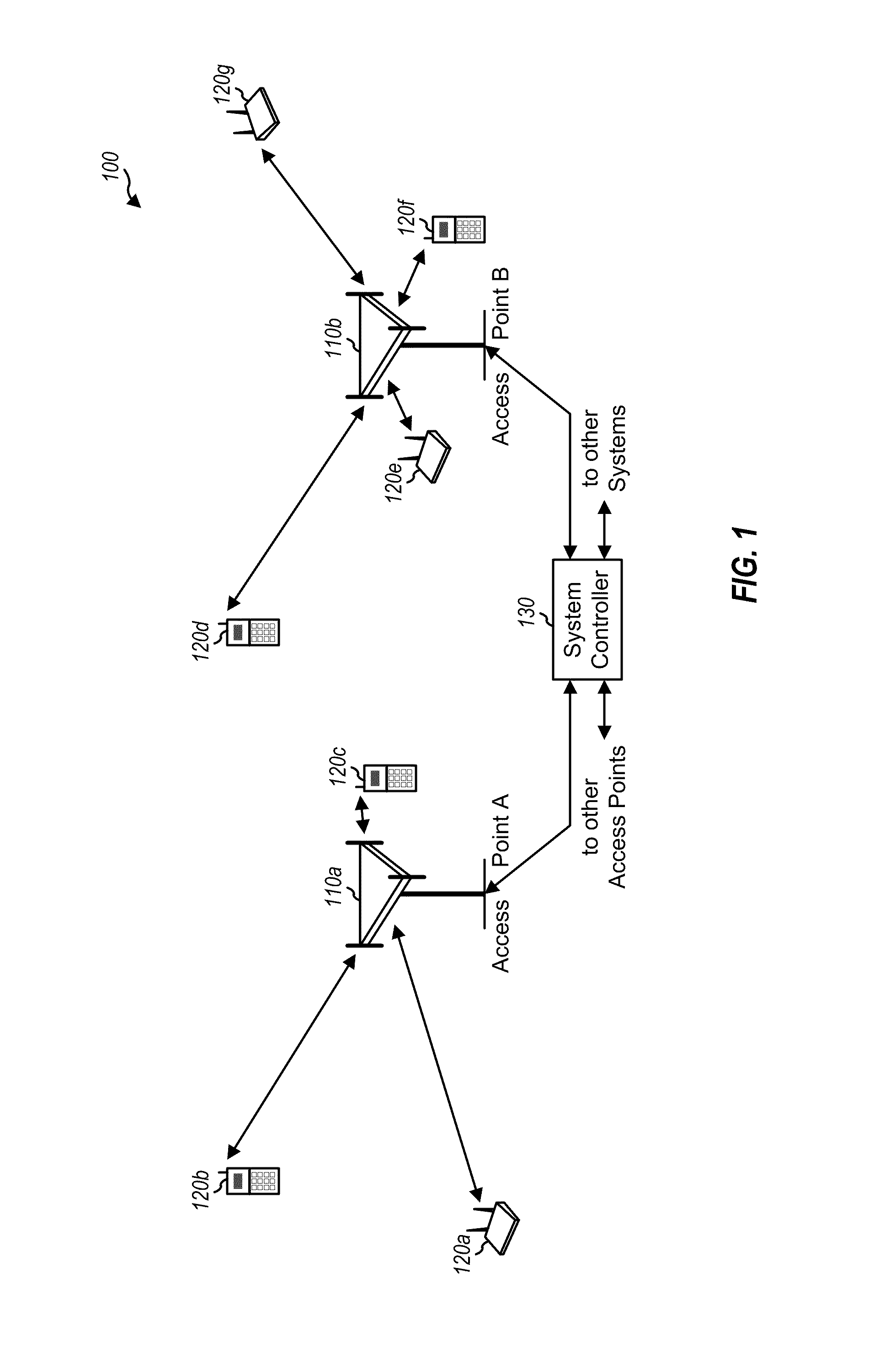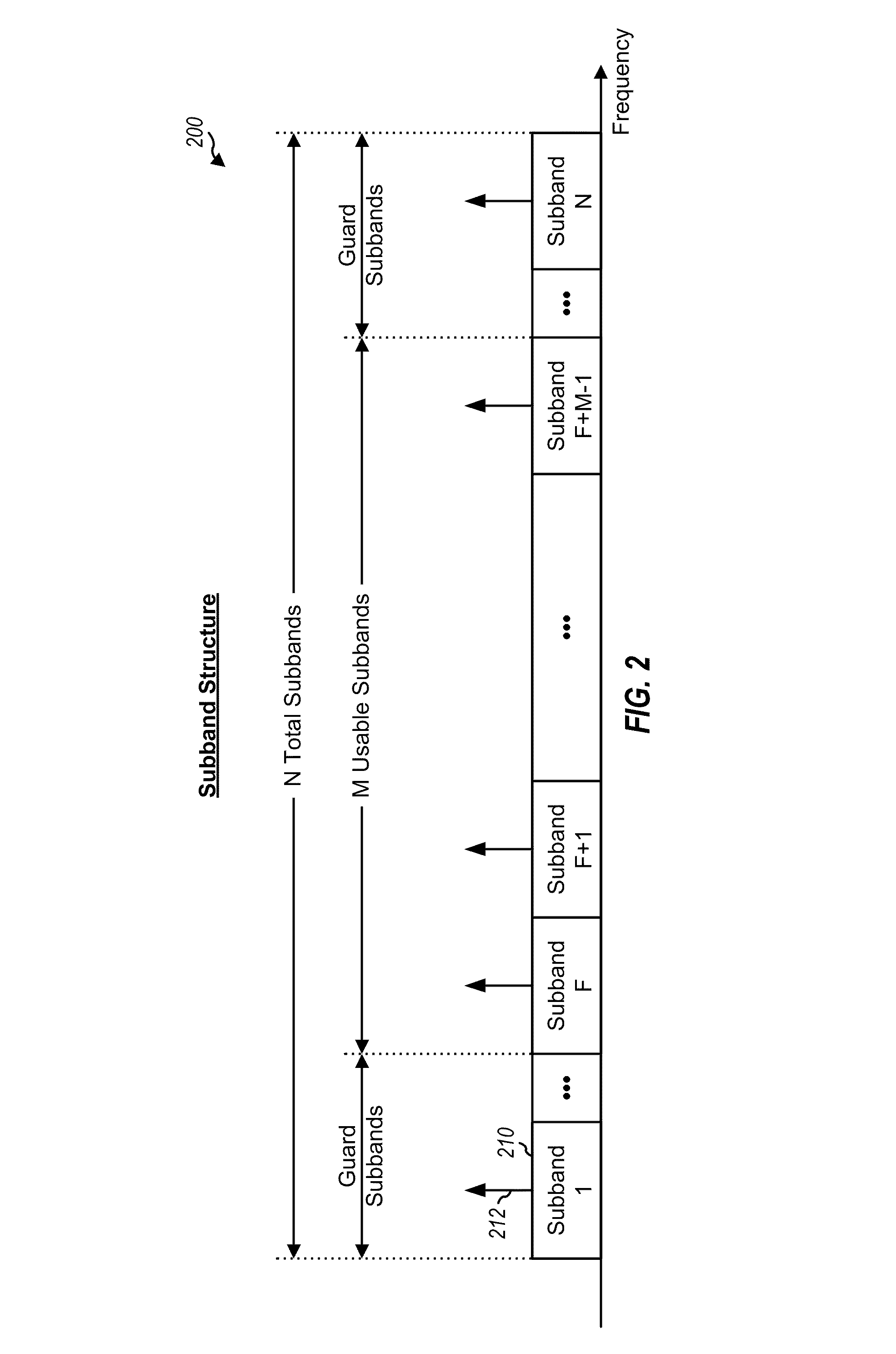Peak-to-average power ratio management for multi-carrier modulation in wireless communication systems
a wireless communication system and multi-carrier technology, applied in power management, transmission path division, wireless commuication services, etc., can solve the problem that the conventional papr reduction scheme may not be applicable to certain multi-carrier communication systems
- Summary
- Abstract
- Description
- Claims
- Application Information
AI Technical Summary
Benefits of technology
Problems solved by technology
Method used
Image
Examples
Embodiment Construction
[0022]FIG. 1 shows a diagram of a wireless multiple-access communication system 100 that employs multi-carrier modulation. System 100 includes a number of access points 110 that communicate with a number of terminals 120 (only two access points 110a and 110b are shown in FIG. 1 for simplicity). An access point is a fixed station that is used for communicating with the terminals. An access point may also be referred to as a base station or some other terminology.
[0023]A terminal is a station that communicates with the access point. A terminal may also be referred to as an access terminal, a user terminal, a remote station, a mobile station, a wireless communication device, or some other terminology. Each terminal may communicate with one or multiple access points on the downlink and / or uplink at any given moment. The downlink (i.e., forward link) refers to transmission from the access point to the terminal, and the uplink (i.e., reverse link) refers to transmission from the terminal ...
PUM
 Login to View More
Login to View More Abstract
Description
Claims
Application Information
 Login to View More
Login to View More - R&D
- Intellectual Property
- Life Sciences
- Materials
- Tech Scout
- Unparalleled Data Quality
- Higher Quality Content
- 60% Fewer Hallucinations
Browse by: Latest US Patents, China's latest patents, Technical Efficacy Thesaurus, Application Domain, Technology Topic, Popular Technical Reports.
© 2025 PatSnap. All rights reserved.Legal|Privacy policy|Modern Slavery Act Transparency Statement|Sitemap|About US| Contact US: help@patsnap.com



